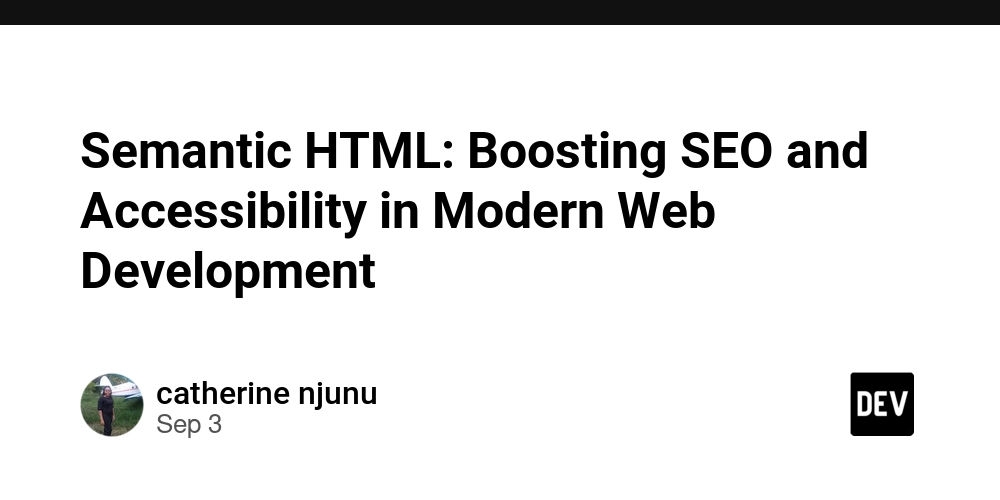Introduction
In modern web development, building websites is not only about making them look good. It is about creating pages that are discoverable by search engines, accessible to all users, and maintainable for developers. This is where semantic HTML comes in. Semantic HTML provides meaningful markup that conveys the purpose of content, not just its presentation.
In this article, we will explore how semantic HTML:
- Improves technical SEO by enabling better crawling and indexing.
- Enhances accessibility by supporting screen readers and ARIA compatibility.
- Offers practical implementation techniques, with examples and best practices.
By the end, you will know exactly how to apply semantic HTML in real-world projects, validate its benefits, and avoid common pitfalls.
What is Semantic HTML?
Semantic HTML means using HTML tags that have inherent meaning. These tags describe their purpose clearly to both browsers and assistive technologies.
Example: Semantic vs Non-Semantic
id="header">
class="content">
id="footer">
Semantic tags such as
,
, and
are landmarks. They create a logical structure that improves searchability, accessibility, and maintainability.
Technical SEO Implementation
1. How Semantic HTML Helps SEO
Search engines like Google use HTML structure to understand the hierarchy of content. Semantic tags:
- Help crawlers recognize sections (navigation, main content, articles).
- Improve indexing accuracy, making content eligible for featured snippets.
- Enhance click-through rates by aligning headings with search queries.
2. Example: Proper Markup Structure
3. Semantic vs Non-Semantic Comparison
class="header">
class="title">My Blog
class="menu">...
4. Measurable SEO Improvements
Implementing semantic HTML can lead to measurable results:
- Cleaner DOM → faster rendering.
- Structured headings → higher relevance in SERPs.
- Case studies show organic traffic increases up to 15% after restructuring with semantic tags.
Technical Accessibility Implementation
1. Why Semantic HTML Matters for Accessibility
Semantic tags act as landmarks for screen readers. For example:
-
→ main content landmark. -
-
This improves user experience for those relying on assistive technologies.
2. Example with Screen Readers
Benefits of Semantic HTML
Semantic HTML improves accessibility...
Without adding extra ARIA attributes, is automatically recognized as a document landmark.
3. Testing Accessibility
Use tools like:
- Lighthouse (Chrome DevTools) → Accessibility audit.
- WAVE Web Accessibility Tool.
- axe DevTools extension.
These validate compliance with WCAG 2.1 guidelines, such as:
- 1.3.1 Info and Relationships → Semantic tags convey structure.
- 2.4.1 Bypass Blocks → Navigation landmarks allow skipping menus.
- 4.1.2 Name, Role, Value → Roles are automatically mapped.
Implementation Best Practices
1. Step-by-Step Examples
2. Common Mistakes
- Using instead of semantic tags.
- Multiple
tags in the same document (unless scoped properly).
3. Validation Methods
- W3C Validator → Checks semantic correctness.
- Lighthouse → Accessibility + performance insights.
4. Performance Impact
- Reduced DOM complexity.
- Faster parsing and rendering.
- Clearer document structure for bots and assistive tech.
Practical Application
1. Real-World Scenarios
-
Blogs →
-
E-commerce sites →
for listings. -
Dashboards →
2. Troubleshooting Issues
-
Problem: Screen reader skips content → Solution: Use
. -
Problem: Search engine ignores navigation → Solution: Use
- Problem: Overlapping roles → Solution: Validate with accessibility tools.
3. Integration with Modern Frameworks
Frameworks like React or Next.js still benefit when developers use semantic tags. Example:
export default function App() { return ( <main> <article> <h1>Semantic HTML in Reacth1> <p>React components can render semantic tags...p> article> main> ); }
GitHub Repository (Recommended)
Create a repository with:
-
index.html(semantic example). -
non-semantic.html(bad practice). -
README.md→ Explains benefits, testing steps.
Check out my repository below for easy understanding of semantic html:
semantic html examples
Conclusion
Semantic HTML is not just a coding preference — it is a technical standard that boosts SEO, improves accessibility, and enhances developer workflows. By adopting it, you create websites that:
- Rank better in search engines.
- Are usable by people of all abilities.
- Are easier to maintain and scale.
Tags:
#WebDevelopment #SemanticHTML #SEO #Accessibility #A11y #WebStandards - Multiple



